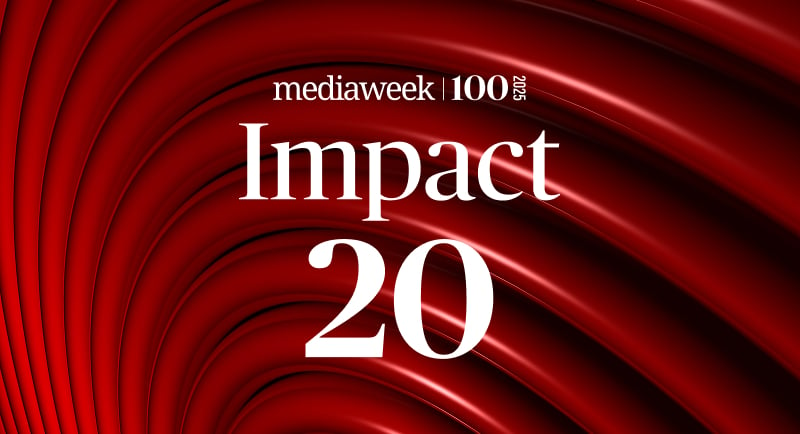This is Mediaweek’s highly anticipated Impact 20 list for 2025, celebrating the individuals and organisations making the biggest difference across Australia’s media and marketing landscape.
The Impact 20 recognises the leaders, innovators and changemakers whose work has created meaningful outcomes, from driving social and cultural progress to championing sustainability, inclusion and community connection across the industry.
Each leader has demonstrated the power of media to influence beyond metrics, proving that purpose and profit can coexist in a rapidly evolving environment.
The Impact 20 sits within Mediaweek’s annual Mediaweek 100, highlighting those who are not only shaping the industry’s future, but using their platforms to make a lasting difference.

Rebecca Costello
Managing Director, Guardian Australia
Rebecca Costello is leading Guardian Australia through one of its most critical phases, building on a business model that places reader trust and public service journalism at the heart of commercial sustainability.
She joined Guardian Australia in January 2024, moving from her long tenure as CEO of Schwartz Media, where she oversaw marquee independent journalism titles and audio properties.
Over the 12 months to March 31, 2025, Guardian Australia generated approximately A$42 million in revenue, of which 55% came from reader contributions (donations, subscriptions and support), despite operating without a paywall.
This signalled a 9% revenue rise year-on-year and is one of the purest demonstrations of the viability of audience support in the Australian news market.
During the recent climate appeal campaign, Guardian Australia surpassed expectations, again landing at 55% reader funding, reinforcing how donor support has become core, not peripheral, to its revenue base.
Beyond metrics, Costello is advocating for transparency and responsibility in the media ecosystem. She continues to emphasise brand safety, ethical ad partnerships and independent standards opening Guardian’s advertising environment to brands seeking credible, trust-based inventory.
Her leadership balances purpose and performance and it demonstrates that open, independent media can survive and grow when readers and advertisers alike believe in the value of trustworthy journalism.
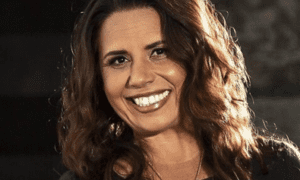
Tanya Denning-Orman
Director, First Nations Content, SBS
Tanya Denning-Orman leads SBS’s strategic effort to deepen Indigenous storytelling and cultural leadership across the network.
In early 2025 she was promoted from Director of Indigenous Content to the newly created role of Director, First Nations, charged with network-wide oversight of Indigenous content and inclusion.
Denning-Orman has a long track record with SBS and NITV. For more than 12 years, she managed NITV during its transition into the national free-to-air platform.
In her expanded role, she is now guiding how First Nations voices are embedded not only in programming, but in organisational culture, audience engagement, commissioning pathways and overall network strategy.
Since her appointment, she has emphasised that the role goes beyond content and it will focus on improving institutional capacity, supporting Indigenous staff development, strengthening community partnerships, and embedding cultural perspectives in the way SBS operates.
She is steering a long-term shift – making Indigenous representation systematic rather than symbolic. She is ensuring that stories from First Nations communities don’t merely appear in SBS’s schedule, but that they can be shaped, staffed and sustained in the organisation itself.
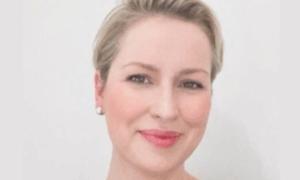
Bel Harper
Chief Product & Marketing Officer, oOh!media
Bel Harper leads oOh!media’s quest to embed responsibility and innovation into every product decision. Her remit spans product development, marketing, data ethics and sustainability, aimed at aligning growth with environmental accountability.
Over the past year, Harper has driven structural changes to elevate customer focus and commercial clarity. She restructured to bring oOh!’s creative hub POLY, product function and partnerships under one umbrella.
On sustainability, Harper’s influence is visible in oOh!’s campaigns and energy-efficiency trials.
A landmark campaign with Australian Ethical pivoted on environmental logic: the selection of sites powered by renewable energy, creative testing to reduce energy draw, and use of recyclable billboard materials. oOh! reported that electricity-related emissions were reduced by 84% for that activation.
Harper’s leadership extends to ethics and transparency. oOh!’s sustainability policy commits to embedding ESG ambitions into core operations, procurement and governance.
She is positioning product innovation not as an add-on but as a vehicle for accountability shaping creative, measurement and deployment decisions through the lens of sustainability and responsibility.
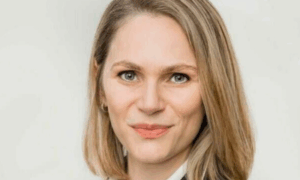
Jocelin Abbey
General Manager, Homes & Lifestyle, Are Media
Jocelin Abbey is transforming Are Media’s Homes & Lifestyle division into a fully integrated, future-facing content and commerce ecosystem that bridges heritage brands with new audience demands.
Since her appointment in early 2025, Abbey has overseen a strategic refresh of key titles including Australian House & Garden, Belle, Country Style and Home Beautiful.
Under the new approach, each brand is being repositioned as a “connected content brand” spanning print, digital, video, social, retail and events.
Are Media publicly described the changes as tying consumer behaviour to advertiser demand, aiming to deepen editorial authority while expanding commercial offerings across talent-led properties, events, partnerships and content-to-commerce initiatives.
The first flagship move under Abbey’s leadership is Interior Agenda, a trends and forecasting platform built by Australian House & Garden. It is slated to expand into a content-and-event series from 2026, reinforcing the Homes portfolio’s ambition to lead design discourse in Australia.
On the reach front, Are Media’s Homes & Lifestyle suite now claims more than 13.5 million consumer touchpoints per month across print, digital, social and retail channels.
Building on that scale, Abbey is pushing content commerce, live events and talent partnerships to diversify revenue beyond traditional ads and circulation.
Under her leadership, the portfolio is also refreshing editorial voices and expanding contributor diversity, aiming to resonate more strongly with younger, digital-first audiences.
Her changes are not just about survival in a shifting media world but about making Homes & Lifestyle brands vital, sustainable and engaging in 2025 and beyond.
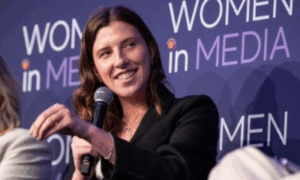
Hannah Ferguson
Chief Executive Officer & Co-Founder, Cheek Media Co.
Hannah Ferguson is forging a bold new path in youth-driven political media by making commentary accessible, irreverent and plugged into everyday life.
She launched Cheek Media in late 2020 with her co-founder Kristin Perissinotto, aiming to challenge traditional outlets and create a platform where feminist and political issues are both disruptive and digestible.
Their early success centred around Instagram commentary and social-first media, building a community that demanded nuance and authenticity.
Over 2025, Ferguson has taken Cheek further into new formats.
She addressed the National Press Club to call for clearer rules around paid partnerships and political content, arguing that creators must act transparently if they accept money or endorsements.
Cheek Media now reaches millions across Instagram and Substack, and her podcast Big Small Talk is ranked among the top news podcasts in Australia.
Her books Bite Back (2023) and Taboo (2024) further cement her voice in cultural conversation.
Ferguson’s work is showing how independent digital platforms can both inform and galvanise young audiences.
By blending humour, politics and social critique, she is increasing civic engagement and reshaping how media engages with issues that matter to emerging generations.
Her leadership reflects a belief that media can be both disruptive and responsible and that real influence lies in transparency, trust and conviction.
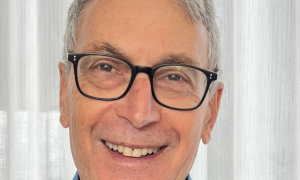
Eric Beecher
Chair & Publisher, Private Media
Eric Beecher remains a stalwart in Australian media, known for his steadfast commitment to independent journalism and the development of digital subscription models.
Beecher is the founder, largest shareholder and Chair of Private Media, publishers of Crikey, The Mandarin, and SmartCompany.
While recent year-specific public metrics are scarce, Beecher continues to preside over a tightly reader-funded model: Crikey derives almost all its revenue from subscriptions, with advertising a very minor component.
The group’s overall business mix includes revenue from advertising, events, licensing and the News Media Bargaining Code.
Under Beecher’s leadership Private Media recently acquired Pinstripe Media (which owns Business Builders, Startup Daily and Flying Solo amongst others).
The deal is positioned as consolidating small & medium enterprise publishing under Private Media, and expanding reach and “new subscription offers and events programming”.
Beecher also recently published The Men Who Killed the News, a book critiquing media power, ethics, and the pressures on journalism in the digital age.
Beecher’s impact is especially seen in how he’s kept independent news alive in Australia.
In 2025, the role he plays is less about rapid scale than about preserving the integrity and sustainability of journalism, proving that there remains value in principled, subscription-driven media in a market crowded by free content and platform dominance.

Mikaela Lancaster
Managing Director AUNZ, Spotify
Mikaela Lancaster is amplifying Australia’s music voice globally while steering a more equitable creator ecosystem at Spotify in 2025.
Under her leadership, Spotify AUNZ launched Turn Up AUS, a multi-million-dollar local music campaign designed to spotlight Australian artists via playlisting, editorial hub programming and immersive fan events.
The campaign combines billboard, social, on-platform and live activations to deepen audience engagement.
Lancaster has also intensified Spotify’s partnership with ARIA, becoming the new presenting partner of the ARIA Awards in a three-year deal that gives Australian artists greater global exposure via Spotify’s platform and marketing reach.
She continues to push for export-driven growth: Spotify reports that Australian artists’ revenues from the platform exceed A$250 million, with around 80% of those royalties generated outside of Australia. Her team has placed Australian editors in global curation groups to advocate for local artists, helping them secure international playlist placement and reach new audiences abroad.
In parallel, Lancaster is guiding Spotify’s internal programs on diversity, wellbeing and creator support. While public disclosures of these initiatives are less visible, her public positioning emphasises that Spotify’s global scale should be matched with local responsibility: supporting women, First Nations musicians and emerging creators is part of how growth must be managed.
Her leadership demonstrates how a global platform can carry local purpose: growing scale without losing culture; using marketing muscle to elevate Australian talent; and aligning commercial success with creator equity and community impact.
In 2025, she is proving that technology and artistry can advance together in Australia’s streaming future.
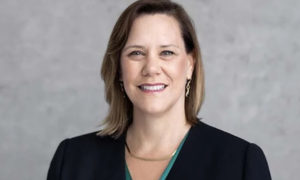
Karen Halligan
Chief Executive Officer, OzTAM
Karen Halligan is steering a new era of audience measurement in Australia, anchoring transparency and consistency across broadcast and streaming platforms rather than letting fragmentation erode trust.
In 2025, she has overseen the rollout and industry adoption of the VOZ Streaming initiative, which extends OzTAM’s Total TV currency to digital and video platforms.
This enables agencies and advertisers to compare audiences and costs across broadcast and streaming on a more unified footing.
Beyond the technical work, Halligan is pushing cultural change.
She regularly speaks at industry forums to build trust, break down silos and encourage open debate on measurement standards, assumptions and accountability. In her view, measurement must evolve progressively ahead of audiences rather than lag behind new consumption forms.
Under Halligan’s leadership, OzTAM has also deepened its collaboration with partners such as Nielsen, RMIT, media agencies and networks to validate, calibrate and improve measurement methods, especially for streaming where scale, device overlap and latency are ongoing challenges.
Halligan’s influence in 2025 lies in how she is giving advertisers and publishers a common language for audience performance across platforms, and ensuring that measurement holds up even as technology, habits and platforms shift.
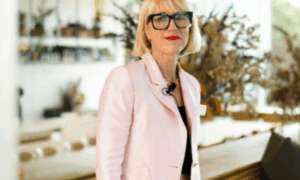
Sharyn Smith
Founder & Chief Executive Officer, Social Soup
Sharyn Smith is reshaping the creator economy in Australia by building a values-based framework for influencer marketing, one grounded in trust, accountability and purposeful impact.
With nearly two decades’ experience, Smith founded Social Soup in 2008; over time the agency has become Australia’s longest-running influencer marketing firm and one of the most respected in the region.
Under her leadership, Social Soup has developed proprietary tech such as Content IQ and the SMART Platform, and driven over 500 influencer campaigns across verticals including FMCG, beauty, tech, retail and beyond. She also holds board roles with AiMCO (Australian Influencer Marketing Council) and the Audited Media Association of Australia.
Smith has expanded Social Soup’s research, advocacy and education in influencer ethics. Her “What Good Influence Looks Like” series offers practical guidance on how to plan campaigns that honour authenticity, measurement and creative integrity, pushing agencies and brands to elevate, not just amplify.
Smith is also heavily active in shaping industry standards. She chairs the Influence Group and serves on the AiMCO board, helping steer transparency, measurement and governance in Australia’s influencer space.
Her work over this year has reaffirmed that influence is not about amplification alone but about building persistent, ethical relationships between brands, creators and audiences. By centring authenticity, accountability and measurement, Smith is helping set a new bar for how creator-driven campaigns are built and trusted in Australia’s media future.

Henrik Isaksson
Regional Managing Director, Australia & New Zealand, Acast
Henrik Isaksson is guiding Acast ANZ through a defining chapter of growth and innovation, expanding both creator economics and advertiser access in a fast-maturing podcast market.
Among the gains is the recruitment of marquee content partners like Casefile True Crime, which added 80 million annual listens to Acast’s roster, strengthening both its local and global storytelling credentials.
To broaden advertiser reach, in mid-2025 Acast partnered with Magnite, opening its podcast inventory to programmatic platforms via SSP infrastructure.
This move allows brands to more seamlessly combine podcast campaigns with broader digital investment through programmatic channels.
He is also advancing product innovation: Acast launched Smart Recommendations, an AI-driven tool that lets advertisers target ideal podcast audiences via natural-language prompts to turn campaign planning from guesswork into insight-led precision.
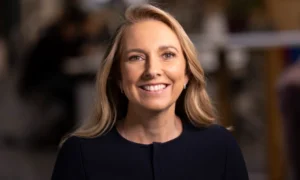
Lizzie Young
Chief Executive Officer, Commercial Radio & Audio
Lizzie Young is modernising Australia’s radio and audio sector and resetting stakeholder relations and sharpening organisational purpose at a time of rapid change.
In 2025, Young has emphasised listening, learning and rebuilding trust with members, agencies and broader stakeholders. Inside the organisation, she is reshaping committees, updating industry codes, and tightening member engagement and public communications.
A clear signal of that shift came with the cancellation of the Australian Commercial Radio Awards (ACRAs) in September 2025.
Young framed the decision as a deliberate reallocation of time and resources towards core programs to build sustainability, regulation, workforce capability and standards that strengthen the sector’s foundations.
She’s a strong advocate for the CRA’s Heard conference, the industry’s flagship ideas-led forum for research, creativity, policy and commercial innovation.
Young’s leadership style is collaborative and purpose-led, leaning into transparency and inclusion. She looks to be positioning CRA as a steward of values, standards and shared resilience, reflecting the durability of the industry it supports.
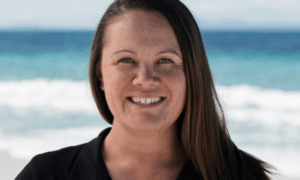
Mikaela Jade
Founder & Chief Executive Officer, Indigital
Mikaela Jade is mapping a new intersection between culture and technology in 2025, leading Indigital to become Australia’s preeminent Indigenous edu-tech enterprise, one that elevates First Nations knowledge through digital innovation.
A Cabrogal woman of the Dharug Nation, Jade founded Indigital in 2014, originally developing augmented reality storytelling rooted in community consultation.
Over time, she has built the company into a broader platform that partners with government, corporations, educational institutions and Indigenous communities to co-design technology solutions grounded in cultural integrity.
She is a World Economic Forum Global Futures Council member, a delegate on the UN Permanent Forum on Indigenous Issues, and has spoken at the WEF on Caring for Country initiatives merging technology and environmental stewardship.
As technology continues to shape Australia’s economy and media, Jade’s leadership offers a model for innovation grounded in culture and equity.
She is turning digital tools into vehicles for knowledge, agency, and connection ensuring that First Nations perspectives are not merely included in innovation but are foundational to it.
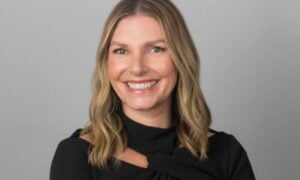
Elizabeth McIntyre
Chief Executive Officer, Outdoor Media Association (OMA) & MOVE Australia
Elizabeth McIntyre has emerged in 2025 as the most visible advocate for the evolution of out-of-home media, bridging the technical, regulatory and public-facing ambitions of Australia’s OOH sector.
Under her leadership, OMA has pushed harder than ever to modernise measurement, sustainability and industry standards with the upgraded MOVE 2.0 system released this year, which she presented at the World Out Of Home Conference in Mexico.
In early 2025, OMA welcomed new members Just Look Media, Locus Outdoor and TechMedia, marking the sector’s adaptation to shifting market dynamics and renewed focus on innovation.
She also introduced the inaugural OMA Awards to Australia’s creatives to celebrate their work in OOH space.
McIntyre remains in demand as a public speaker and industry commentator.
Her advocacy emphasises that OOH must be more than creative. It must be accountable, sustainable and technologically robust.
By spearheading measurement reform, expanding membership, and making OMA a consistent voice on media panels and global forums, McIntyre is reshaping how advertisers, agencies and media owners value outdoor in 2025 and beyond.
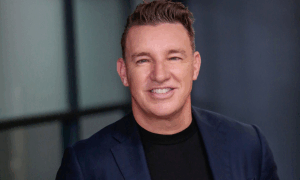
Sam Buchanan
Chief Executive Officer, Independent Media Agencies of Australia
Sam Buchanan is elevating the role of Australia’s independent media agencies, reshaping IMAA from representative body to a high-impact movement that strengthens competitiveness, capability and collective voice across the sector.
Buchanan joined IMAA in 2020 (initially as General Manager) and later became CEO, bringing over 25 years’ experience across the media industry.
Under his leadership, IMAA has grown its membership and media partner network. It has now capped media partners at 45 to maintain quality engagement.
Over the past year, Buchanan has pushed forward the IMAA’s education, inclusion and governance programs. The Female Leaders of Tomorrow mentoring initiative continued its second intake, providing structured pathways for women into senior media roles.
He has positioned the IMAA as a tougher advocate for independents: in 2025, the organisation publicly challenged government master media tenders and campaigned for greater access and fairer structures for indie agencies.
He has cautiously welcomed the recent tender for the Western Australian Government’s master account, with a new clause requiring agencies demonstrate how their work would directly benefit the local economy.
Under Buchanan, IMAA has expanded group-deal benefits (data tools, research, software, verification) so smaller agencies can compete more directly with larger networks.
His leadership gives independent media agencies a stronger voice, sharper capability and greater cohesion at a time when agency models are under pressure.
Buchanan is helping define how the “indie” identity evolves as a standard of excellence, adaptability and integrity in Australia’s media future.

Sophie Madden
Chief Executive Officer, Media Federation of Australia (MFA)
In a media landscape under pressure from disruption, regulation and shifting talent expectations, Sophie Madden is fortifying the foundations of agency and media practice, recasting professionalism, ethics and collective purpose as core business imperatives.
Since her appointment to MFA’s top role, Madden has shepherded initiatives such as MFA EX, Media for Good, the MFA Awards and benchmarks in ESG to embed trust, capability and integrity across the media agency sector. In her remarks at the 2025 MFA Awards she said,
“This year’s winners prove, yet again, that Australia’s media agencies are world-class, delivering clever, creative and commercially powerful solutions that transform businesses and make a real difference in people’s lives.”
Her leadership style is inclusive and values-based. She emphasises clarity in complex debates to turn issues like AI, diversity, mental health, climate and talent churn into usable frameworks for agencies and media organisations.
In 2025, Sophie Madden stands as an important steward of industry resilience. Her work helps ensure that the MFA not only advocates for agency interests, but leads on ethics, professionalism and collective accountability.
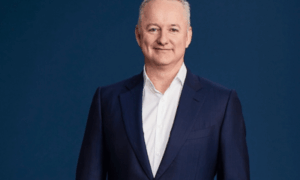
Hugh Marks
Managing Director, ABC
Hugh Marks brought a renewed energy to the ABC during his term as Managing Director, bringing decades of media leadership to refocus the public broadcaster on quality, purpose-driven content and strategic clarity in 2025.
Taking over in March, Marks was appointed following his time leading Nine (including during its merger with Fairfax), and as co-founder of Dreamchaser, a content studio.
Early in his tenure, he sent an all-staff email setting ambitious priority: content comes first and the ABC must be easier to work with with leaner processes.
Among the most visible changes: the cancellation of Q+A after 18 years, part of a broader restructuring to eliminate underperforming formats and reallocate resources toward higher-value journalism, original podcasts, enhanced television production and audience development in metropolitan audio.
He has also proposed simplifying the ABC’s offerings into a smaller number of products focused on iView, ABC Listen and News Digital, with other platforms to be used more selectively.
Marks’ leadership is redefining what public service media can achieve in 2025: a broadcaster with legacy strengths that is nonetheless agile, selective, and focused on public value over volume.
He is helping sharpen the ABC’s role as a vital national storyteller, one that is trusted, relevant and responsive to how Australians engage with media today.
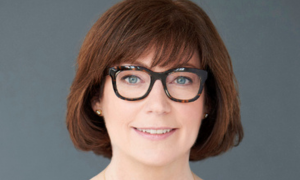
Deirdre Brennan
Chief Executive Officer, Screen Australia
Deirdre Brennan is recasting Screen Australia’s mission through a deliberate focus on equity, diversity and structural inclusion.
Her leadership in 2025 is pressing the national screen sector to embed First Nations, regional voices and culturally safe practice into its DNA, not as add-ons, but as central to how stories are funded, told and preserved.
Since joining as CEO in January 2024 from WildBrain, Brennan has amplified the agency’s support for works by and about First Nations Australians reinforcing eligibility criteria that require First Nations practitioners in key creative roles.
She has also taken a stronger public role in amplifying regional production: in her keynote at Regional to Global 2025, Brennan described the agency’s five strategic pillars Empower, Enrich, Enable, Engage and Elevate as part of a plan to ensure a sustainable community for all creators, wherever they call home.
Under her watch, Screen Australia continues to evolve its funding policies.
As of 1 July 2025, revised guidelines across the Documentary and Narrative Content programs took effect, signalling a recalibration of support structures to better reflect changing market dynamics and production models.
Brennan’s impact lies not only in supporting more diverse stories, but in rebuilding how the screen sector operates from process to governance to accountability.
By pushing structural inclusion, cultural safety and regional equity to the forefront, she is helping ensure Australia’s screen future feels more reflective, fair and sustainable and positioning Screen Australia as a driver of change, not merely a funder.
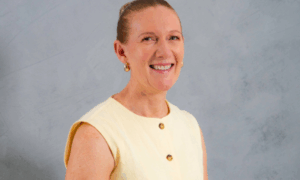
Vanessa Lyons
Chief Executive Officer, Think News Brands
Vanessa Lyons is driving a pivotal shift in how Australia values, measures and invests in news, anchoring public trust, commercial accountability and collaborative standards in a time of disruption.
Since becoming CEO of Think News Brands in 2024, Lyons has sharpened the organisation’s mission, to unite publishers, agencies and advertisers around a consistent, transparent and credible approach to news measurement and investment.
Under her leadership, Think News Brands integrated Roy Morgan iris digital audience data into its Total News measurement currency, giving media buyers a more unified and audited metric for cross-platform reach.
An important marker in 2025 is the recent release showing Total News Publishing reaches 22.4 million Australians on average per month, roughly 98% of Australians aged 14+, making news publishing one of the most ubiquitously consumed media categories. Lyons commented:
“It’s clear that news is a cornerstone of daily life for Australians. This audience data demonstrates not only the reliance consumers place on news, but also the opportunity for brands to connect and engage with a vast and addressable audience.”
Beyond measurement, Lyons has also been active in news literacy, advocacy and industry education. She has led cross-sector initiatives that help agencies and media owners understand how news environments differ from other ad media (in content risk, brand safety, audience loyalty), and has promoted the idea of Total News as not just reach but trusted impact.
Her leadership style combines clarity and consensus: she’s built trust across competing media stakeholders and simplified complex policy issues into accessible frameworks.
In 2025, Lyons is helping reframe news investment as a strategic, measurable decision, not just a gesture of credibility but a core part of advertiser ROI and journalistic sustainability.
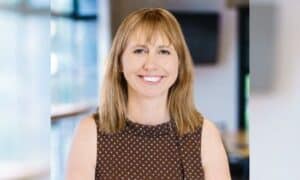
Gai Le Roy
Chief Executive Officer, IAB Australia
Gai Le Roy is increasingly central to the digital media ecosystem in 2025, shaping how Australia’s advertising industry balances innovation, measurement and ethics at a moment of regulatory change and technological disruption.
With more than 30 years in media and digital research, Le Roy has led IAB Australia since 2018, after previous roles in Fairfax, Nielsen, ninemsn and Gateway Research.
Under her stewardship, IAB has evolved from purely advocacy and standards into a proactive industry convenor, piloting initiatives that address the pressing challenges of privacy reform, AI ethics, measurement standards and sustainability.
In 2025, one of her most visible efforts has been launching the IAB AI Working Group, formed to guide local best practices in AI use cases, measurement, bias, content creation and governance in digital advertising.
This group works with publishers, agencies, tech vendors and policy bodies to ensure clarity and consistency in applying AI across the ecosystem.
She also oversaw the publication of the Data State of the Nation Report 2025, which revealed that 92% of industry decision-makers consider data use critical to success in a changing privacy landscape. The report has become a reference point as advertisers shift toward contextual targeting, first-party data strategies and clean rooms in response to signal deprecation and regulatory uncertainty.
Her leadership style is marked by clarity, consensus and education, turning complex policy debates into actionable guidance for marketers and media owners.
In 2025, she is helping elevate the ethical baseline across digital media in Australia ensuring transparency, trust and collaboration are not optional, but foundational to how the industry innovates.
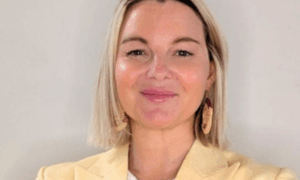
Philippa Moig
Chief Executive Officer, UnLtd
In 2025, when audiences demand purpose as well as performance, Philippa Moig stepped into one of Australia’s key industry leadership roles unifying media, marketing and creative sectors behind social impact with precision and accountability.
Moig assumes the role of CEO of UnLtd in June 2025, joining from Google where she served as Media Leader ANZ since late 2024.
Her career spans senior roles across major agencies, including PHD, OMD, Carat and Mediacom, giving her deep insight into both the commercial and creative layers of the media system.
Since taking up the position, Moig has began refreshing UnLtd’s governance and strategic focus. She arrived with a mandate to roll out a new cause-centric strategy, better diversify revenue streams, and sharpen the measurable social impact the organisation achieves across youth services.
Under Moig’s direction, UnLtd is aligning its partnerships with major media owners, agencies and tech firms more tightly to impact outcomes for at-risk youth rather than episodic campaigns.
She is also strengthening internal performance infrastructure introducing clearer KPIs, tools for monitoring deliverables, and a refined board oversight model that places outcome metrics at the centre rather than goodwill gestures.
Moig’s leadership is repositioning UnLtd not just as the industry’s moral conscience, but as its capability engine for purpose-driven action.
Through her drive to blend commercial discipline with social ambition, she aims to make the industry’s “good intentions” operational, measurable and persistent, a platform that connects media’s power with real impact for vulnerable young people in Australian communities.
